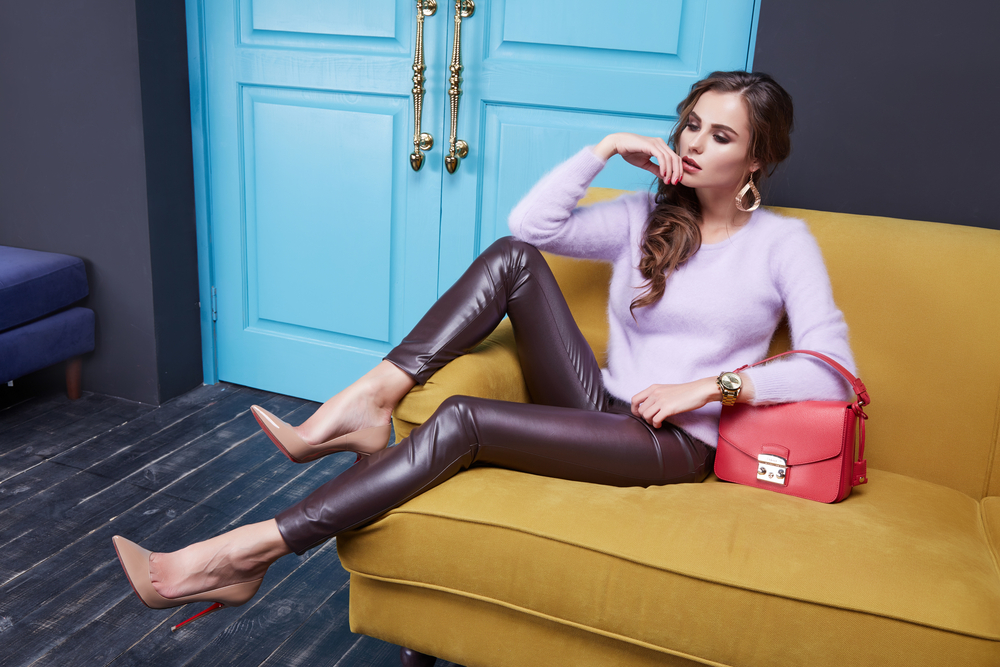The Art of Modeling: Unveiling the Secrets to Success in the Fashion Industry in Photoshoots

The Art of Modeling: Unveiling the Secrets to Success in the Fashion Industry in Photoshoots
In the dazzling world of fashion, modelling stands as one of the most prominent and sought-after professions. Models are the visionaries who bring designs to life, captivating audiences with their poise, grace, and ability to effortlessly embody the essence of a brand. Behind those mesmerizing photoshoots lie the secrets to success in the fashion industry. From perfecting your pose to embracing versatility, mastering the art of modeling requires dedication, patience, and a keen eye for detail.
1. The Power of Body Language
In the fashion industry, body language can make or break a photo. A model's pose should exude confidence and attitude, enhancing the garments they showcase. The right posture, hand placement, and facial expression can transform a simple photoshoot into a visual masterpiece. It's crucial for models to understand how to use their bodies to tell a story and communicate the intended message of the clothing line.
2. Versatility is Key
To thrive in the fashion industry, versatility is paramount. Models who can effortlessly adapt to various styles, themes, and aesthetics have a competitive edge. Whether it's runway modeling, editorial shoots, or commercial gigs, being able to showcase different moods and personas will open doors to a wide array of fashion opportunities.
3. Mastering Facial Expressions
A model's face is the canvas on which emotions are painted, creating a connection between the audience and the clothing. Learning how to portray different expressions effectively can bring life and depth to a photoshoot. From a seductive gaze to a playful smile, models must practice and experiment with their facial expressions to capture the desired mood and evoke emotions.
4. The Importance of Confidence
Confidence is not just a state of mind; it's an essential element in the world of modeling. When a model exudes confidence, it is reflected in their every move, creating an aura that captivates onlookers. Confidence allows the models to showcase the garments with conviction, making the audience believe in the authenticity of the brand they represent.
5. Embrace Criticism and Continuous Improvement
In the fashion industry, personal growth is paramount for long-term success. Feedback from photographers, stylists, and clients should be seen as an opportunity for growth rather than a setback. Models must be open-minded and willing to implement constructive criticism to refine their skills continually. Embracing and acting upon feedback is what sets apart exceptional models from the rest.
6. Building a Solid Portfolio
A model's portfolio serves as their calling card in the industry. It showcases their versatility, style, and potential for future gigs and collaborations. Aspiring models should carefully curate their portfolio, choosing images that demonstrate their range and versatility while maintaining a consistent and compelling narrative. Each photo should tell its own story while complementing the larger theme of the portfolio as a whole.
7. Networking and Building Connections
In the fashion industry, networking is paramount. Models should actively seek opportunities to meet and connect with photographers, stylists, makeup artists, and fellow models. Attending industry events, fashion shows, and casting calls can be crucial for forging valuable connections and staying on top of potential opportunities. Building a strong network increases the chances of being discovered, receiving recommendations, and ultimately securing coveted modeling contracts.
8. Maintaining Physical and Mental Well-being
Modeling is a physically demanding profession, necessitating models to prioritize their health and well-being. Establishing a fitness routine, maintaining a balanced diet, and adopting positive mental health practices are crucial to sustain a successful modeling career. Models must remember to take care of themselves both physically and mentally to stay fit, agile, and ready for the demanding lifestyle of the industry.
9. Frequently Asked Questions
Q1: How do I start a career in modeling?
A: Starting a modeling career requires dedication and research. Building a strong portfolio, reaching out to reputable modeling agencies, and attending open casting calls are all great starting points.
Q2: Are there any height or weight requirements to become a model?
A: While certain niche markets may have specific requirements, the industry has become more inclusive in recent years. Different types of modeling cater to various body types and sizes, celebrating diversity.
Q3: How can I improve my posing skills?
A: Practicing in front of a mirror, studying the poses of successful models in magazines or online, and taking professional modeling classes can enhance your posing skills and help you develop a signature style.
Q4: Can I be a model if I don't have the typical "model" looks?
A: Absolutely! The modeling industry has evolved to embrace diversity and individuality. There are opportunities for models with unique features, and niche markets are continually growing.
Q5: How important is social media presence for models?
A: Social media has become a significant platform for models to showcase their work, engage with followers, and attract potential clients. Building a strong online presence can help models gain visibility and create a personal brand.
In conclusion, modeling is not only about looking beautiful; it's an art form that requires creativity, passion, and a deep understanding of body language. From perfecting poses to mastering facial expressions, the art of modeling unveils the secrets to success in the fashion industry. By embracing versatility, investing in continuous improvement, and building a strong network, aspiring models can pave the way for a fulfilling and prosperous career in this glamorous industry.
